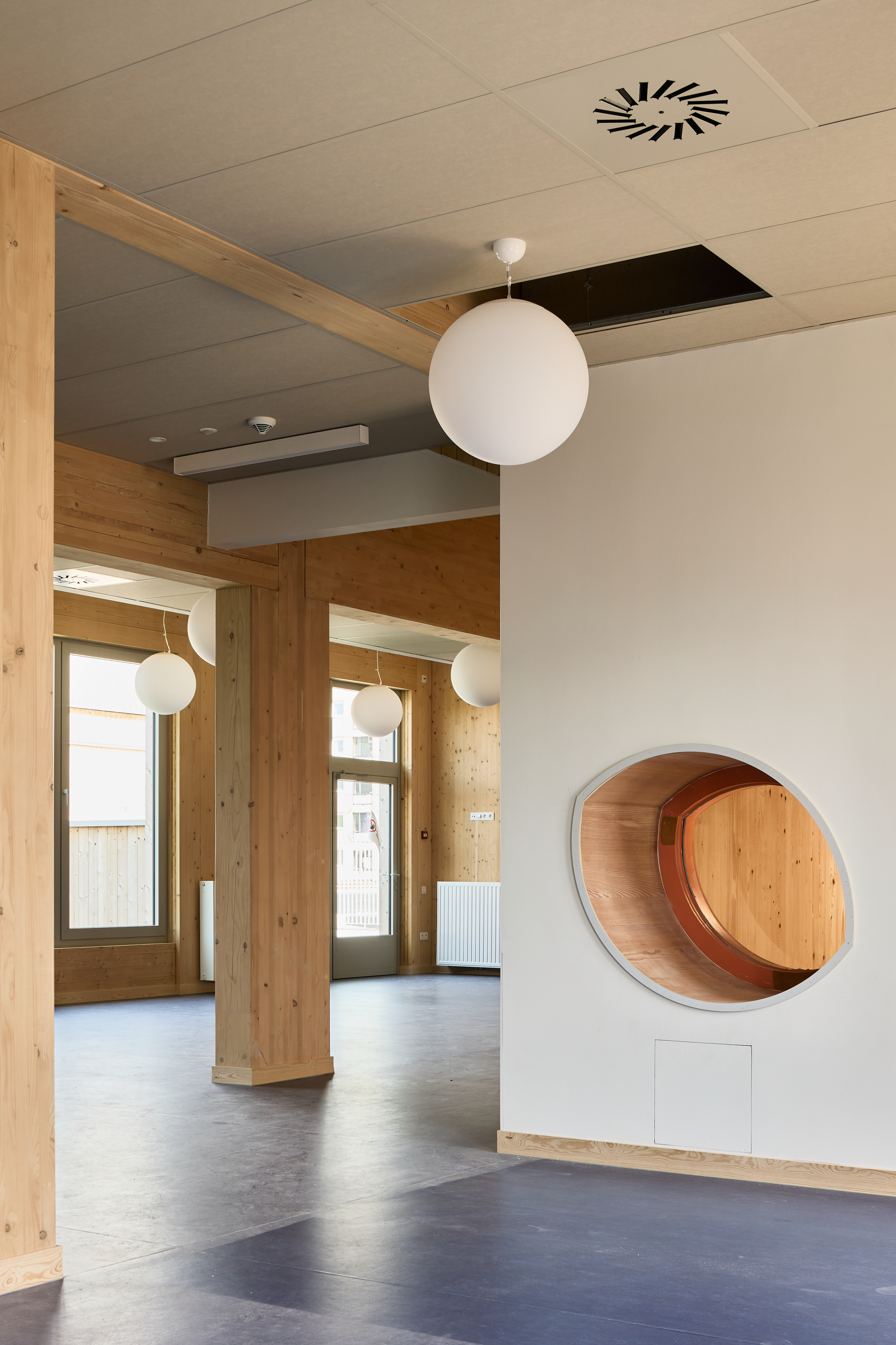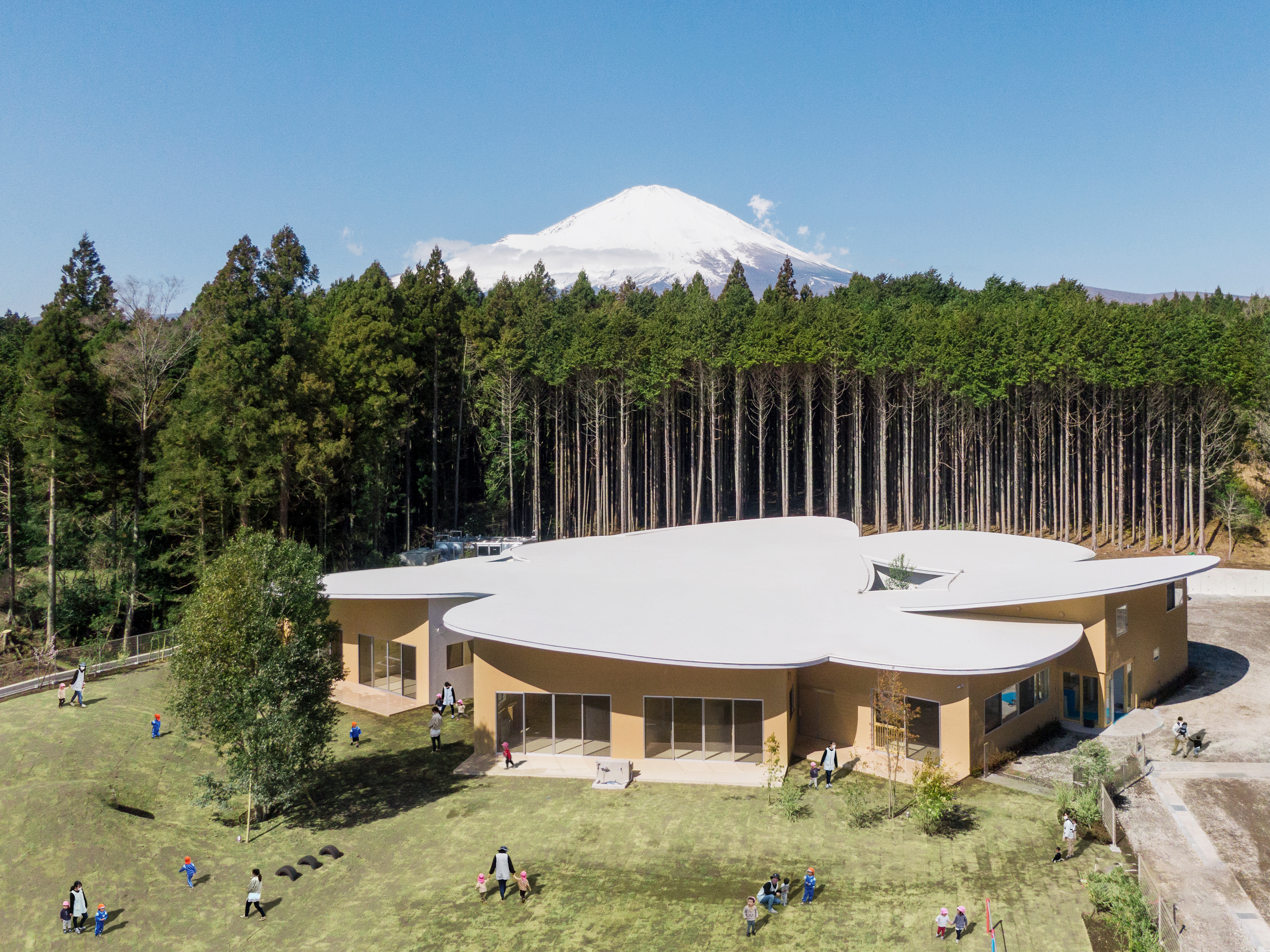 打开微信扫一扫
打开微信扫一扫
复制链接

教育建筑设计 全球五强
获奖者:Bovenbouw architectuur
获奖作品:Large Care Campus Rozemaai
Building a care campus is not just an assembly of the separate program components. The intention is to supplement the way of life of the children and the way of working of the staff. All this while connecting the building in terms of urban development, but also functionally with the neighborhood and the surrounding landscape. The campus plays an enormous part in the children's perception of the world. We do not see the answer to the assignment in an isolated building, but in an active interface, in which building, landscape and neighborhood are connected. An overall design in which perspectives gradually change, overlap and perspectives arise. The outdoor layout forms an essential link between the neighborhood and the care campus. The multi-armed structure of the entire building hides the scale of the building program. There are also various front doors along the various building arms. The school has its address at Leo Baekelandstraat. The boarding school has its address at Herman Vosstraat. In this way visitors do not perceive the large scale as imposing. Along the courtyards are other entrances that provide a pleasant dynamic of passages and more intimate moments. The living environment of the children is limited and mainly takes place in the interior. By interweaving the interior with the landscape and offering a wide variety of sensations, the enriched interior becomes as if it were an outdoor space. The corridors offer playful views to the courtyard and to the surrounding landscape; interior and landscape are intertwined. We are committed to sustainability: because of the limited CO2 impact, we chose to construct the entire building in crosslaminated timber. Heating is done by a combination of heat pumps with a BEO field (ground-water heat pump).

教育建筑设计 全球五强
获奖者:NFO doo
获奖作品:Paleo Park
In 1992. dinosaur bones emerged in Colona Bay on the coast of Bale in Istria. It is assumed that about ten species of dinosaurs inhabited this area. One of them is the brachiosaurus, almost the largest dinosaur that existed on Earth whose weight reached up to 30 tons and could reach a length of 20 to 25 meters. Due to their great discovery, Bale was included in the World List of Paleontological Sites. The Bale site, as far as is known, is the only site in the world that hides fossilized remains under the sea, and it is assumed that some are as old as 200 million years. The Paleo Park within Camp Mon Perin is a combination of a themed amusement water park and an educational research polygon with the aim of approaching and popularizing this archaeological site in the Bale Coast. The complex itself covers over 16,000 square meters, placing all enclosed facilities under green roofs that fit the natural configuration of the terrain to the maximum with use of fluid lines. The water content flirts with the stylized silhouette of a dinosaur, which becomes visible from the educational promenade on the roof. The complex consists of an entrance reception, a large swimming pool, a children's pool, a swimming pool with a hot bath, an indoor catering facility, a covered outdoor bar, toilets, a sun deck and a souvenir shop. Several life-size dinosaur sculptures have been placed next to the pools, dinosaur bones have been exhibited as part of the children's sandstones of the "archaeological site", and a walk on the roof where one can follow the course of reptile development on Earth. During the design, great care was given not to disturb the existing natural environment and to preserve the indigenous vegetation. Paleo Park is becoming a tourist example of exploiting a given, impressive story for commercial purposes, but with a dose of educational character presented in a fun way.

教育建筑设计 全球五强
获奖者:Sunjin Vietnam Joint Venture Company
获奖作品:Dich Vong Hau Kindergarten
Built in a suburban area with a low construction density and population, now in the process of urban exploration and expansion, this 20-year-old school was renovated for people’s needs according to contemporary land use planning standards and new teaching and learning requirements of the inner city.On a 6540 sqm estimated area, the old building— including a 2-story classroom block with 10 classrooms and some additional functions — was somewhat dilapidated. The teaching and learning facilities are still lacking; the architectural structures remain monotonous and do not cater to the psychological needs of the student's age group. The functional layout is outdated, irrational, and lacks indoor and outdoor play spaces, especially ecological values and green spaces for children and the urban area.With the philosophy of "students as the center," the proposed idea was to keep the existing building structure and use the steel frame structure covered with plastic wood on the rooftop to increase the height to 3 floors. Additionally, to build 2 new 4-story blocks on the west side. This new and old mixed-use solution creates a playground core that is safe and acts as a large skylight at the center of the school, promoting natural ventilation across the floors. In these 2 blocks, restrooms, warehouses, and corridors are arranged at the front to isolate direct noise for the classrooms behind, and to gain the disinfection of the restroom while creating a sunshade for the classroom.The classroom spaces were rearranged, increasing the original size by 1.5 times. They have new optimal ventilation and natural light through the system of windows and the enclosed playground inside. Each classroom is designed as a villa with 3-4 open sides, surrounded by a green garden with natural ventilation, avoiding sunlight and cold wind in winter. Restrooms and balconies are organized in the west to insulate the classroom. Other support functions are on the 4th floor - the highest floor to prioritize the arrangement of classrooms suitable for preschool psychophysiology on the lower floor.The philosophy of "Learning through exchange" and "Encouraging movement - learning through play and playing through learning" is conveyed when designing dedicated playground spaces suitable for each age group, gender, and individual personality of the students. The idea of maximizing greenery on higher floors, creating a fun learning playground for students developing the ecological factor for the project. Additionally, it enhances the ability to counter thermal radiation and creates more ecological green spaces for the city's overall landscape. The rooftop garden, once operational, is estimated to be able to supply approximately 50-80% of the school's vegetable needs.The application of modern technology and advanced, efficient, environmentally friendly materials is emphasized in the project. Regarding the main structure of the construction, the new building utilizes a characteristic beamless floor system, allowing for spacious and flexible partitioned spaces while maintaining cost-effectiveness. The corridors use a high-tech precast steel frame system. The roof framework adopts a precast steel structure with artificial wood cladding, which is both environmentally friendly and sustainable.For the exterior materials, plastic wood is used on the façade to provide shade for the new building and also serves as a decorative element for the renovated block, creating a cohesive overall appearance for the entire project. The fences and outdoor steps use eco-friendly and durable wood-concrete. These materials are all new and highly recyclable.The design aims to ensure the standard of facilities according to the requirements of educational innovation, suitable for the psychophysiology of preschool students, approaching the philosophy of educational innovation, regional and international advanced education. At the same time, it achieved energy-saving values for not only the building itself but also contributed to the surrounding community with economical construction investment costs and a reasonable public investment budget.

教育建筑设计 全球五强
获奖者:Takashige Yamashita Office
获奖作品:Children's Forest Nursery School
‘Children’s Forest’ is a nursery school to hold children between the age of 0 to 5, planned on a forest hill at the foot of Mount Fuji. On our first visit, the site was filled with Hinoki trees with dappled sunlight penetrating scarcely through the branches casted plentiful light bubbles overlapping each other on the ground, from which we got inspired to design a sunlit place softly floating in the woods. Its topographical feature - the undulating slope and the hill rising up to 3-4 meters to the west of the site - was another important element to retain, as we believed such environmental aspects are significant for the children to experience as part of the education. The rooms for each age group and other programs such as temporary care or teachers’ lounge are made as separate cubical units sitting on varying ground level and angles, oriented to frame its own view of natural scenes around - wide grass field spread out in front of the rooms of 2-5 year-olds for direct and easy access whenever children want to run around, along with the 8-meters-tall symbolic tree to sit under and the hill to climb with a small tunnel to crawl into; forest and woods embracing rooms that needs a rather calm atmosphere; sky changing its color over the trees always visible from the open courtyard beside the hall, etc. These volumes are interconnected inward by ramps and in-between spaces, creating interior landscape where children can play, crawl or climb in a more comfortable and safer condition even in bad weather. A multipurpose hall capable of holding up to 150 people is located in the center surrounded by the room units that everyone can easily get together for a daily playtime or events. Despite the large covering over the hall, the skylights on the eaves and the gaps appearing between the roof and box units allow natural light and glimpses of greenery stream into the interior space and connect people inside visually and physically to the environment. The open courtyard, furnished with a wooden deck, is accessible from the hall providing a safe playground especially for the youngest members not yet ready to run around in a larger lawn. On the other side of the hall, older and more active children would enjoy climbing the bouldering, up where it connects to the back yard on a higher ground level, embraced by the forest. The design strategy employing multiple interconnected volumes is structurally valid as well, as the framework is planned based on the size of each cubical unit, comparably smaller and feasible, which eventually forges the overall structure in much larger scale. Once completed, the volumes surrounding the hall stand stable enough to bear the ceiling structure stretching over the hall, minimizing the number of columns in this central space. Each volume is topped with ruled surface out of straight beams, forming a slight slope to compose the undulating movement of the roof as a whole. Integrated with its rich natural context, we wish this garden of children provides a warm and healthy environment for the little ones to grow up with some good memories from the forest.


